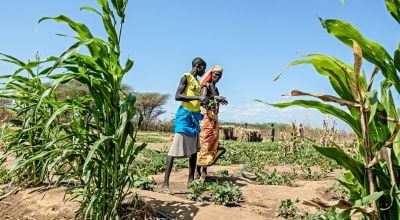
Read our 2024 annual report

Knowledge Hub
Global warming is the long-term heating of the earth's surface observed since the pre-industrial period (between 1850 and 1900) due to human activities. The main cause of global warming is the burning of fossil fuels, such as oil, gas and coal. When burnt, these fuels release carbon dioxide into the air, which traps greenhouse gases in the earth’s atmosphere, causing it to heat up.
What are the effects of global warming?
Global warming results in climate change such as droughts, sea level rise, prolonged heatwaves, mass forest fires, and the disruption of weather patterns. These effects are not felt equally, with certain regions and people suffering more than others. Global warming is the greatest environmental challenge we as a species have faced, and without action, the consequences of it will ultimately affect every person on earth.
Environmental effects of global warming
Extreme heat and droughts
Due to global warming, the earth’s temperature is rising. Recent years have seen an increase in unseasonal and prolonged heatwaves, with 2023 confirmed the hottest year ever recorded globally. Extreme heat not only has detrimental health effects on the population, it also contributes to droughts and wildfires.
Ice melting and sea level rise
Global warming leads to glacial melting, not only in the artic region but also in mountain ranges such as the Himalayas. Melting artic glaciers results in sea level rise globally, flooding coastal areas and eroding the land. In Himalayan countries such as Afghanistan, the melting of mountain ice can lead to increased flooding, risk of landslides, and lower agricultural yields.
Disruption of weather patterns
Warmer temperatures also influence weather patterns, such as rainfall. With additional moisture in the atmosphere, rains can be heavier and less predictable, resulting in flooding.
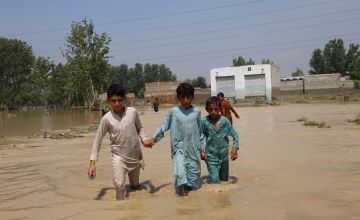
Economic effects of global warming
Increasing inequality
Global warming exacerbates existing inequalities, both within individual countries and on a global scale. Those who are most vulnerable to climate change have the least resources to recover from extreme weather conditions. Families who are already living in poverty do not have the ability to rebuild a home if it’s damaged in a flood or purchase new livestock if their herd dies during a drought.
Damage to GDP
The effects of global warming on day-to-day life also have an impact on a country’s economy. In Kenya, the GDP (which measures the value of goods and services produced in a country) could drop by 7.25% in less than thirty years if climate change continues at its current level. Droughts, heatwaves, and floods have a severe impact on agriculture and tourism, two of the leading economic sectors in the country. Kenya is just one example of how a nation’s economy could be hurt by climate change.
Spending on rebuilding
After an extreme weather event caused by global warming, nations must spend money on repairing and rebuilding destroyed areas and infrastructure. One study estimates that the damage created by extreme weather costs €14.7 million an hour. As these events become stronger and more frequent, governments will struggle to fund the necessary restorations and more communities may be forced to go without shelter, electricity, and/or running water.
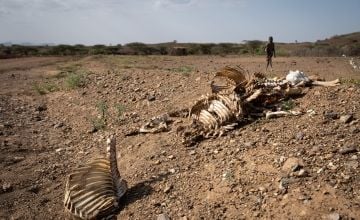
Effects of global warming on the world's poorest communities
Loss of livelihoods
The effects of global warming can destroy livelihoods for many families. Unpredictable weather patterns can disrupt the growing and harvest seasons as farmers struggle to keep crops and livestock alive through heatwaves and drought. Flooding can wipe out herds that families rely upon for food and trade, and destroy property such as bicycles or vehicles that they use to travel to work or make deliveries.
Increasing hunger
With loss of livelihoods, more people struggle to afford daily essentials and hunger becomes more widespread. Even for those who can normally afford to buy food, the scarcity cause by extreme weather events means that fresh goods are harder to come by and the price of what’s available skyrockets. Some families can end up spending 75% of their income on food alone.
Destruction of homes and displacement
In addition to destroying livelihoods, extreme weather events can also lead to mass destruction of homes. Wildfires, floods, and storms often push people out of the areas they’ve inhabited for decades, displacing entire communities. The UNHCR estimates that 21.5 million people are displaced annually, leading to a growing number of “climate change refugees” – people who no longer have a safe place to live due to global warming.
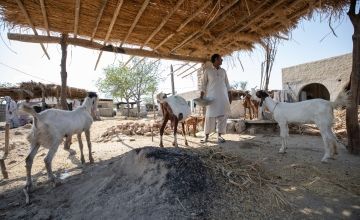
Effects of global warming on children
Malnutrition
As hunger increases due to global warming, more children are at risk of malnutrition. Malnutrition is life-threatening, and has long-term effects on children. This includes stunted physical and mental development, along with a weaker immune system, leaving them vulnerable to other illnesses in the future.
Missing school
Global warming can have an impact on a child’s education in several different ways. If a family loses their livelihood, they may no longer be able to afford their child’s tuition fee. Children who are hungry may not have the energy or concentration to travel to school and spend a day learning. Additionally, the destruction of property and subsequent displacement mean children may be out of school for months at a time, as schools need to be rebuilt or families relocate to temporary camps.
Poor health
Along with malnutrition, global warming also places children at risk of other health problems. Heatwaves, smog, and smoke from wildfires can make it difficult for children to breathe, while storms and flooding can pollute clean water supplies, resulting in the spread of illness.

What is Concern doing in response to global warming
Climate-smart agriculture
Concern is helping communities learn new skills to adapt to the effects of global warming and continue farming. This includes climate-smart agriculture. For example, in Bangladesh, we have implemented climate smart techniques such as new harvesting systems and raised seedbeds.
Watershed management
Watershed management helps control the pollution of the water and other natural resources. In Afghanistan, where melting glacial ice places communities at risk of flooding and erosion, Concern supports watershed management projects such as measuring erosion statistics and implementing soil and water conservation to replenish the water table.
Rebuilding livelihoods
Mitigation techniques are valuable, but vulnerable communities need greater support to recover from the effects of global warming. Following extreme flooding in Pakistan, many families lost livestock, their main source of income. Concern supported a livestock market so that families could once again have goats, enabling them to sell milk and, in future, the goats’ offspring.
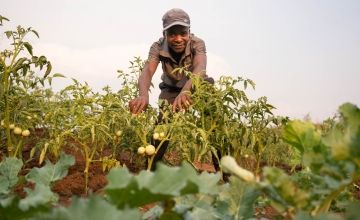
How can you help people living with the effects of global warming
As you can see, communities from Kenya to Bangladesh are already putting their own solutions in place to protect their farms, water sources and livelihoods, just as they have for generations. By raising money and campaigning, we can give them the support they need to succeed.
We use expert techniques to work with communities to build resilience, improve farming and access to food. For 50 years Concern has long fought against extreme poverty, and we know first hand that climate change is now part of that fight.
Other ways to help
Corporate support
Is your company interested in working together for a common cause?
Fundraise for Concern
From mountain trekking to marathon running, cake sales to table quizzes, there are lots of ways you can support our work.
Buy a gift
With an extensive range of alternative gifts, we have something to suit everybody.
Leave a gift in your will
Leave the world a better place with a life-changing legacy.
Volunteer with Concern
The lots of ways to get involved with our work as a volunteer
School fundraising
Without the generous support from schools, we wouldn't be able to do the work that we do.



